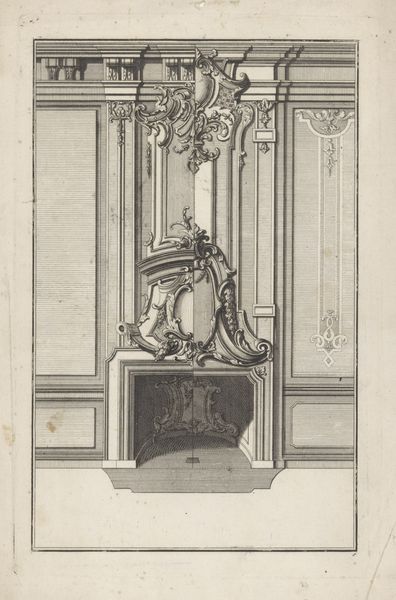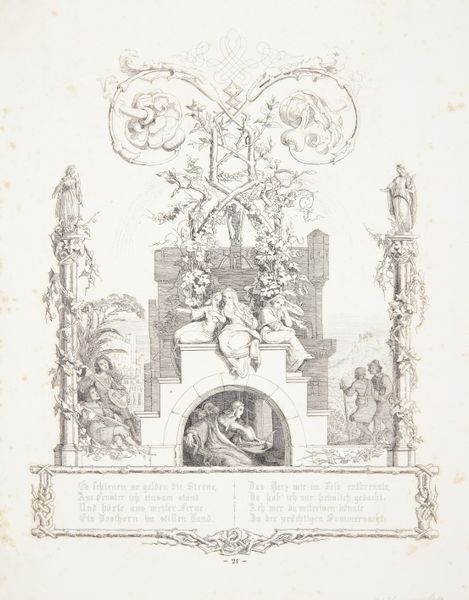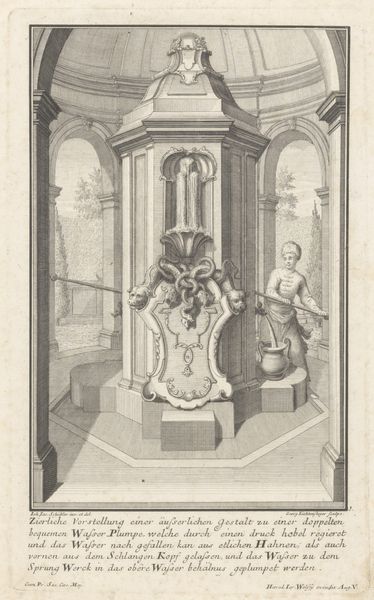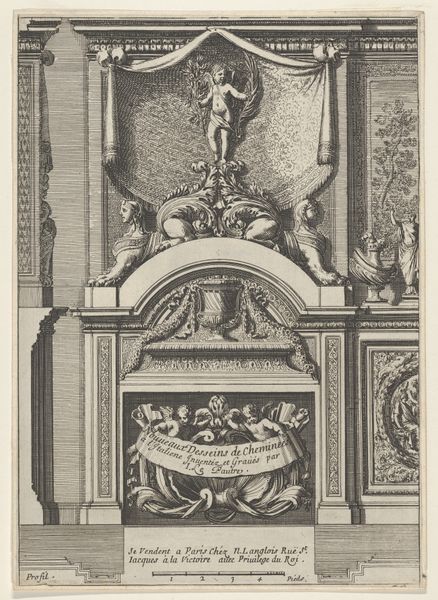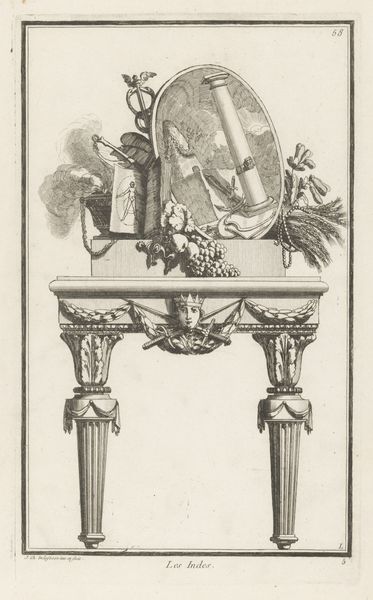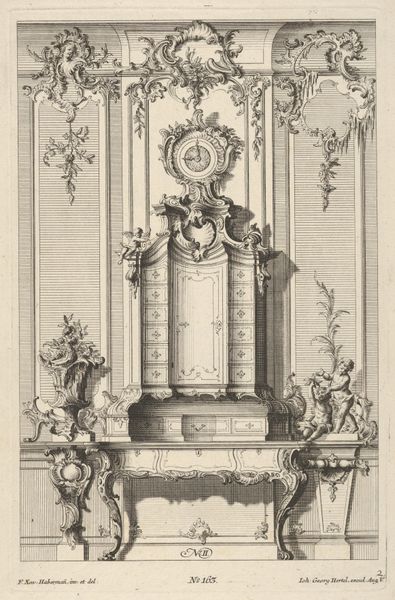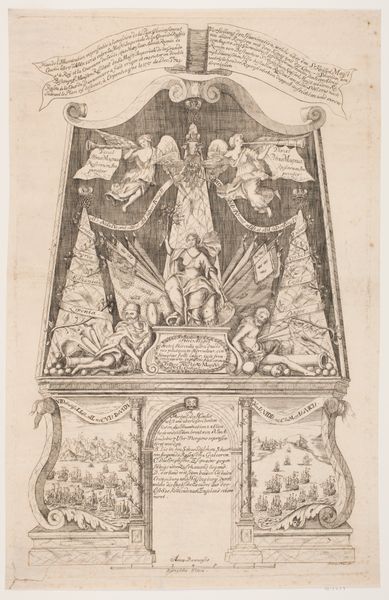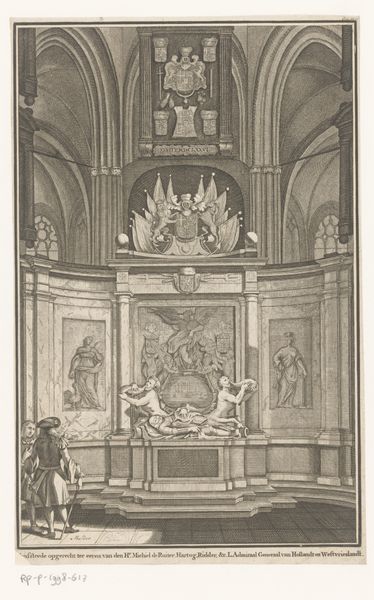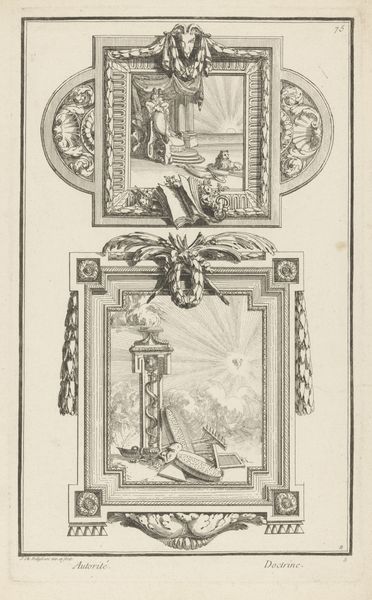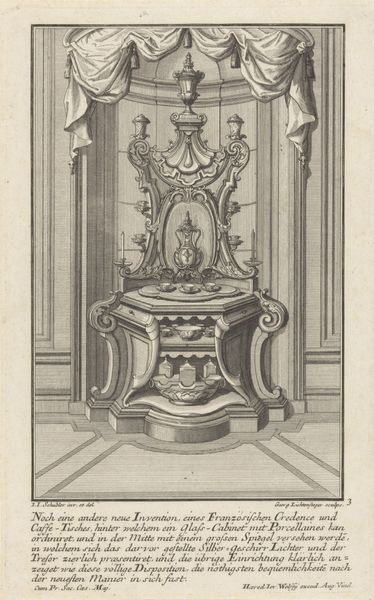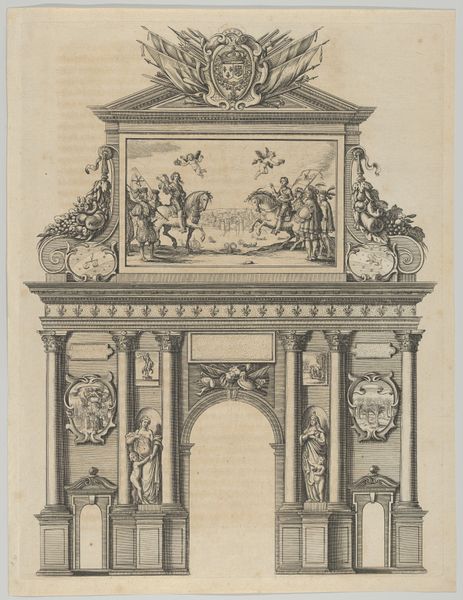
print, engraving, architecture
#
aged paper
# print
#
old engraving style
#
geometric
#
line
#
decorative-art
#
engraving
#
architecture
#
rococo
Dimensions: height 343 mm, width 230 mm
Copyright: Rijks Museum: Open Domain
This is Pierre Claude Delagardette's "Organ without Visible Pipes," an etching from the 18th century. At its heart, a radiant burst of light emanates from a cluster of angels and clouds, a vision reminiscent of divine apparitions. The central figure plays a harp, and evokes the celestial harmony. This motif of heavenly musicians, bathed in divine light, isn't new; one sees it echoed in Renaissance frescoes and Baroque altarpieces. What's intriguing is how Delagardette reframes it within the context of an organ design. The organ becomes more than a musical instrument, it becomes a conduit for spiritual experience, a vessel for channeling the divine. Consider how the harp, a symbol of poetic inspiration since antiquity, is here elevated to a celestial instrument. It reminds me of Orpheus, whose music could charm even the gods. Yet, here, the context shifts from mythology to religion, transforming the harpist into an angelic figure, mediating between the earthly and the divine. This image speaks to our collective longing for transcendence, our subconscious desire to bridge the gap between the mundane and the sacred. It is a vivid example of how cultural memory shapes our visual language.
Comments
No comments
Be the first to comment and join the conversation on the ultimate creative platform.

